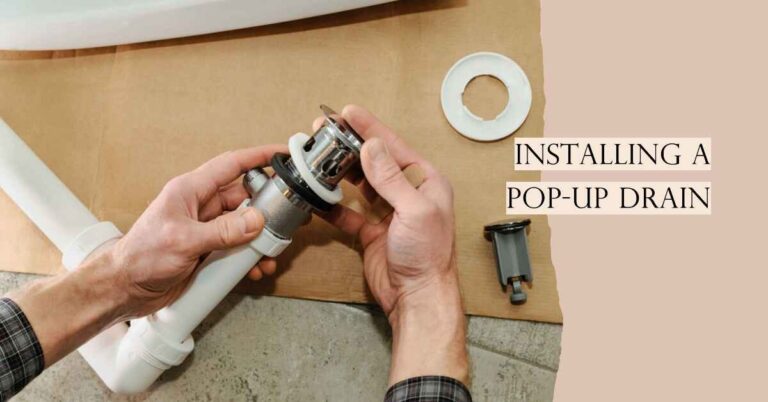If you plan to replace your old bathroom faucet with a new one, you might wonder: Are bathroom faucets universal? In other words, can you buy any faucet that looks good and fits your budget and install it without any hassle?
The answer is not so simple. Bathroom faucets are not completely universal, meaning that they are not interchangeable with any other faucet. However, they are not unique, meaning they have some common features and standards that make them compatible with most sinks and plumbing systems.
In this article, we’ll explain what makes bathroom faucets universal, what factors you need to consider when choosing a new faucet, and how to install a faucet yourself or hire a professional plumber. By the end of this article, you’ll better understand bathroom faucets and how to find the best one for your needs.
What Makes Bathroom Faucets Universal or Not?
Bathroom faucets deliver water from the plumbing system to the sink. They usually consist of three main parts: the spout, the handle(s), and the valve(s). The spout is the part that directs the water flow into the sink. The handle(s) is the part that controls the water temperature and pressure. The valve(s) is the part that regulates the water flow and prevents leaks.
Differences Between Bathroom Faucets
Bathroom faucets are not universal because they come in different shapes, sizes, styles, finishes, and features. For example, some faucets have one handle, while others have two.
Bathroom faucets are not universal because they come in different shapes, sizes, styles, finishes, and features. For example, the number of handles can vary from one to two. The installation type can be either single-hole or three-hole. The spout shape can range from high-arc to low-arc. The sprayer function can be either pull-out, pull-down, or fixed. The operation mode can be touchless, motion sensor, or manual.
These variations in design and functionality affect the faucet’s aesthetic appeal, convenience, and performance. They also affect the compatibility of the faucet with your sink and plumbing system. Therefore, you must choose a faucet that matches your preference, sink configuration, and plumbing specifications.
These variations in design and functionality affect the faucet’s aesthetic appeal, convenience, and performance. They also affect the compatibility of the faucet with your sink and plumbing system. Therefore, you must choose a faucet that matches your preference, sink configuration, and plumbing specifications.
Similarities Between Bathroom Faucets
Bathroom faucets are universal because they follow standard measurements and requirements that fit most sinks and plumbing systems. For example, most faucets have a standard spout reach of 4 to 6 inches, which means they can fit most sink depths. Most faucets have a standard spout height of 3 to 5 inches, which can fit most sink heights.
Moreover, most faucets use a standard connection size of 1/2 inch for the hot and cold water supply lines, meaning they can connect to most plumbing pipes. Most faucets also use a standard aerator size of 15/16 inch for male threads or 55/64 inch for female threads, which means they can attach to most spouts.
These standard measurements and requirements ensure that bathroom faucets are compatible with most sinks and plumbing systems. However, they are not absolute rules, and there may be exceptions or variations depending on the manufacturer or model of the faucet. Therefore, you need to check the specifications of the faucet before buying it to ensure it fits your sink and plumbing system.
What Factors Do You Need to Consider When Choosing a New Faucet?
When choosing a new faucet for your bathroom, you must consider several factors that affect its compatibility, functionality, and appearance. Here are some of the most important factors to consider:
Sink configuration:
You must choose a faucet that matches the number and size of holes in your sink. For example, if your sink has one hole, choose a single-hole or center-set faucet with an escutcheon plate (a metal cover that hides the extra holes). If your sink has three holes, you must choose a center-set faucet with two handles or a widespread faucet with two handles and a separate spout.
Plumbing specifications:
You must choose a faucet that matches the size and type of your plumbing pipes and valves. For example, if your plumbing pipes are copper or PEX (cross-linked polyethylene), choose a faucet with compression or push-fit fittings (connect pipes without soldering or gluing). If your plumbing pipes are galvanized steel or iron, you need to choose a faucet that has threaded fittings (fittings that screw onto pipes).
Water pressure:
You need to choose a faucet that can handle the water pressure in your home. For example, if you have low water pressure (below 40 psi), you need to choose a faucet that has a high-flow rate (above 2.0 gpm) or an aerator that increases the water pressure. If you have high water pressure (above 80 psi), you need to choose a faucet that has a low-flow rate (below 1.5 gpm) or a pressure-reducing valve that decreases the water pressure.
Water quality:
It would be best to choose a faucet that can resist hard water (water with a high mineral content) or corrosive water (water with a low pH level). For example, if you have hard water, you need to choose a faucet that has a ceramic disc valve (a valve that has two ceramic discs that slide against each other to control the water flow) or a cartridge valve (a valve that has a plastic or metal cartridge that moves up and down to control the water flow). These valves are more durable and less prone to leaks than other valves. If you have corrosive water, choose a faucet with a stainless steel or brass body and spout, as these materials are more corrosion-resistant than other metals.
Style and finish:
You need to choose a faucet that matches the style and finish of your bathroom decor and fixtures. For example, if you have a modern bathroom, you need to choose a faucet that has a sleek and minimalist design, such as a single-handle faucet with a chrome or matte black finish. If you have a traditional bathroom, choose a classic and elegant faucet, such as a two-handle faucet with a bronze or brushed nickel finish.
How to Install a Faucet Yourself or Hire a Professional Plumber?
Installing a new faucet in your bathroom can be a DIY project or a job for a professional plumber, depending on your skill level, budget, and time. Here are some pros and cons of each option:
- DIY: Installing a faucet can save you money on labor costs and give you more control over the process. However, it can also be challenging, time-consuming, and risky if you don’t have the right tools, skills, or experience. You may encounter problems such as leaks, clogs, or damage to your sink or plumbing system. You may also void the warranty of your faucet if you install it incorrectly.
- Professional plumber: Hiring a professional plumber can save you time and hassle and ensure your faucet is installed correctly and safely. However, it can also cost you more money on service fees and materials. You may also have less flexibility over the schedule and quality of the work.
If you decide to install the faucet yourself
Here are some basic steps to follow:
- Turn off the water supply to your sink by closing the valves under the sink or the main water valve in your home.
- Remove the old faucet by disconnecting the water supply lines from the faucet using an adjustable wrench or pliers. Then unscrew the mounting nuts or screws that hold the faucet in place using a basin wrench or screwdriver. Lift the faucet from the sink and clean the surface of dirt or residue.
- Install the new faucet by following the manufacturer’s instructions. Generally, this involves inserting the faucet into the sink holes and securing it with nuts or screws from underneath. Then, depending on your plumbing system, connect the water supply lines to the faucet using compression, push-fit, or threaded fittings. Make sure to tighten all connections securely but not too tightly to avoid leaks or damage.
- Turn on the water supply to your sink by opening the valves under the sink or the main water valve in your home. Check for any leaks or drips from the faucet or the connections. If you find any, turn off the water supply again and fix them by tightening or replacing the fittings.
- Enjoy your new faucet!
If you decide to hire a professional plumber,
Here are some tips to follow:
- Do some research before choosing a plumber. Look for online reviews, ratings, testimonials, licenses, insurance, and warranties from different plumbers in your area. Ask for recommendations from friends, family, neighbors, or coworkers who have hired plumbers.
- Get at least three quotes from different plumbers before hiring one. Compare their prices, services, materials, and timelines. Ask for written estimates that include all the details of the work and any additional fees or charges.
- Communicate clearly with your plumber about your expectations and preferences. Tell them what kind of faucet you want to install, where you want to install it, when you want to install it, and how much you want to spend on it. Ask them any questions or concerns about their work or your plumbing system.
- Supervise their work and check their progress regularly. Ensure they follow your instructions and specifications and use quality materials and tools. Give them feedback and suggestions if needed.
- Pay them promptly and fairly after they finish their work. Check their invoice for errors or discrepancies and ask for receipts or invoices for any materials they used. Thank them for their service and leave them a review or testimonial if you’re satisfied with their work.


